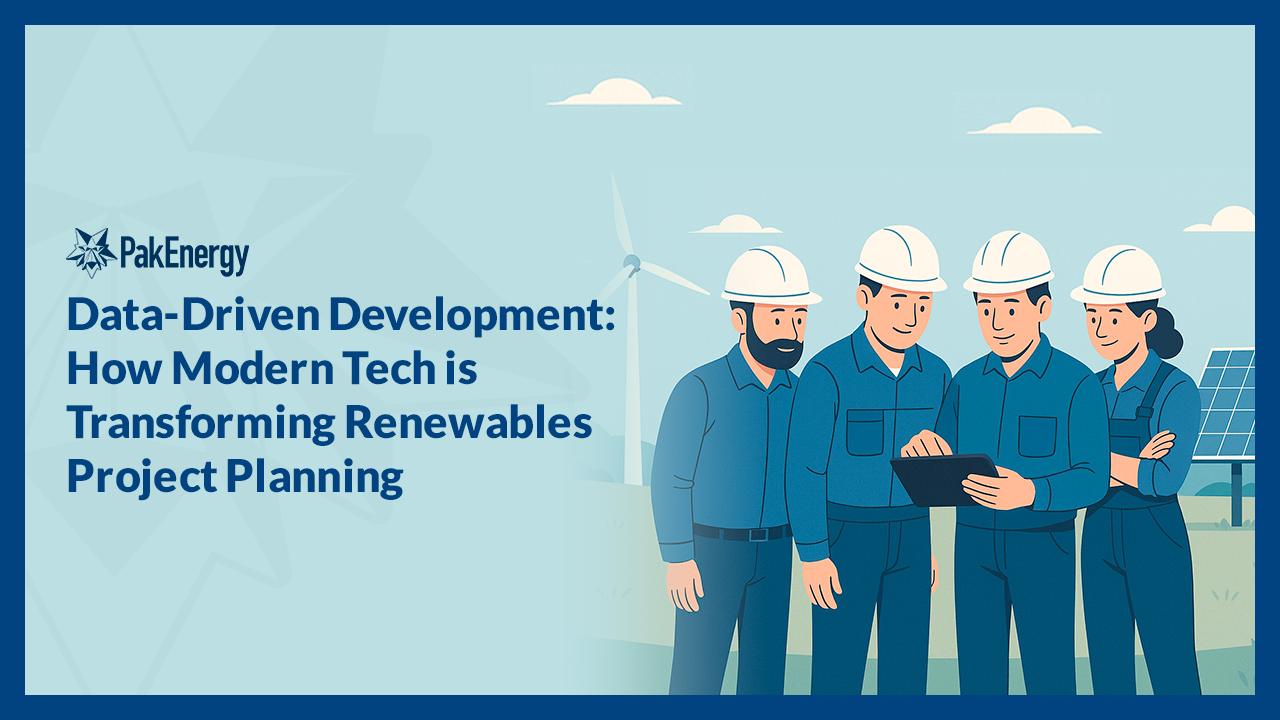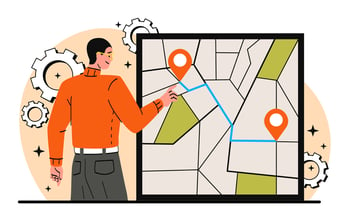
Renewable energy projects are surging, but behind every successful solar or wind project are months or even years of careful planning. This planning phase involves multiple manual steps, fragmented data, and time-consuming reviews, often leading to delays, missed milestones, and costly rework. However, this lengthy process can change. Technology is accelerating development, bringing clarity to complex decisions, and reshaping how teams approach project planning.
GIS: Turning Maps into Smart, Actionable Insights

The location site you choose for renewable energy can make or break a project. Geographic Information System (GIS) technology gives developers the power to assess potential sites with precision, layering land data, environmental constraints, regulatory zones, and infrastructure in a dynamic, visual interface. Instead of toggling between static maps and disconnected data sources, GIS allows teams to:
- Visualize land parcels, ownership boundaries, and lease status
- Identify proximity to roads, substations, and transmission lines
- Evaluate flood zones, wetlands, and other risk factors
- Overlay wind and solar resource maps for production potential
This allows teams to filter out unsuitable sites early and focus on high potential opportunities. It also improves stakeholder communication by making project decisions more transparent and easier to explain.
Automation: Moving Faster and Smarter
Project planning involves hundreds of moving parts, many of which require repetitive administrative work: verifying ownership, generating documents, sending updates, tracking expirations, following up on tasks, and compiling reports. These manual steps are not only slow, they’re also prone to human error.

With the right tools in place, renewables teams can automate:
- Document generation and version tracking
- Notifications for lease renewals and milestones
- Title review workflows and stakeholder approvals
- Data entry and field updates from mobile teams
This reduces time spent on repetitive tasks and ensures that critical processes aren’t delayed or forgotten. More importantly, it minimizes the risk of errors, like missed deadlines, misplaced documents, or duplicated efforts, keeping the project on track from day one.
Integrated Platforms: Connecting People, Processes, and Progress
Perhaps the biggest challenge in renewables planning is coordination. Land agents, legal teams, engineers, permitting experts, finance teams, and environmental consultants all play a role, but they’re often working in different systems with different priorities. When communication breaks down, so does momentum.

Integrated platforms solve this by bringing everyone into the same digital workspace. With shared access to project data, documentation, maps, timelines, and communications, teams can:
- Collaborate in real time with up-to-date information
- Track project status across teams and regions
- Identify bottlenecks or issues before they cause delays
- Maintain a single source of truth for compliance and reporting
This level of integration improves accountability, reduces duplication of work, and ensures that every part of the project is moving in sync. It also gives leadership a clear view of project readiness and risk, helping them make faster, more confident decisions.
From Manual to Modern: The Future of Renewable Project Planning
As the renewables industry continues to grow, so must the approach to planning. The old ways of scattered files, siloed teams, and reactive problem-solving can’t support the scale and speed today’s clean energy project developers need. By embracing data-driven tools and connected platforms, renewables teams can plan more intelligently, act more confidently, and deliver more reliably. Technology doesn’t just save time; it empowers smarter decisions, reduces risk, and helps build trust with stakeholders across the board—even when working with lean teams.
PakEnergy Renewables is built to support this shift. By combining GIS intelligence, automated workflows, and an integrated planning platform, Pak Renewables helps project developers and managers reduce rework, accelerate timelines, and gain full visibility from land acquisition to project readiness.
Book a demo today to see how PakEnergy can transform the way your team plans and manages renewable energy projects, giving your team the clarity, agility, and edge to lead the clean energy future.
